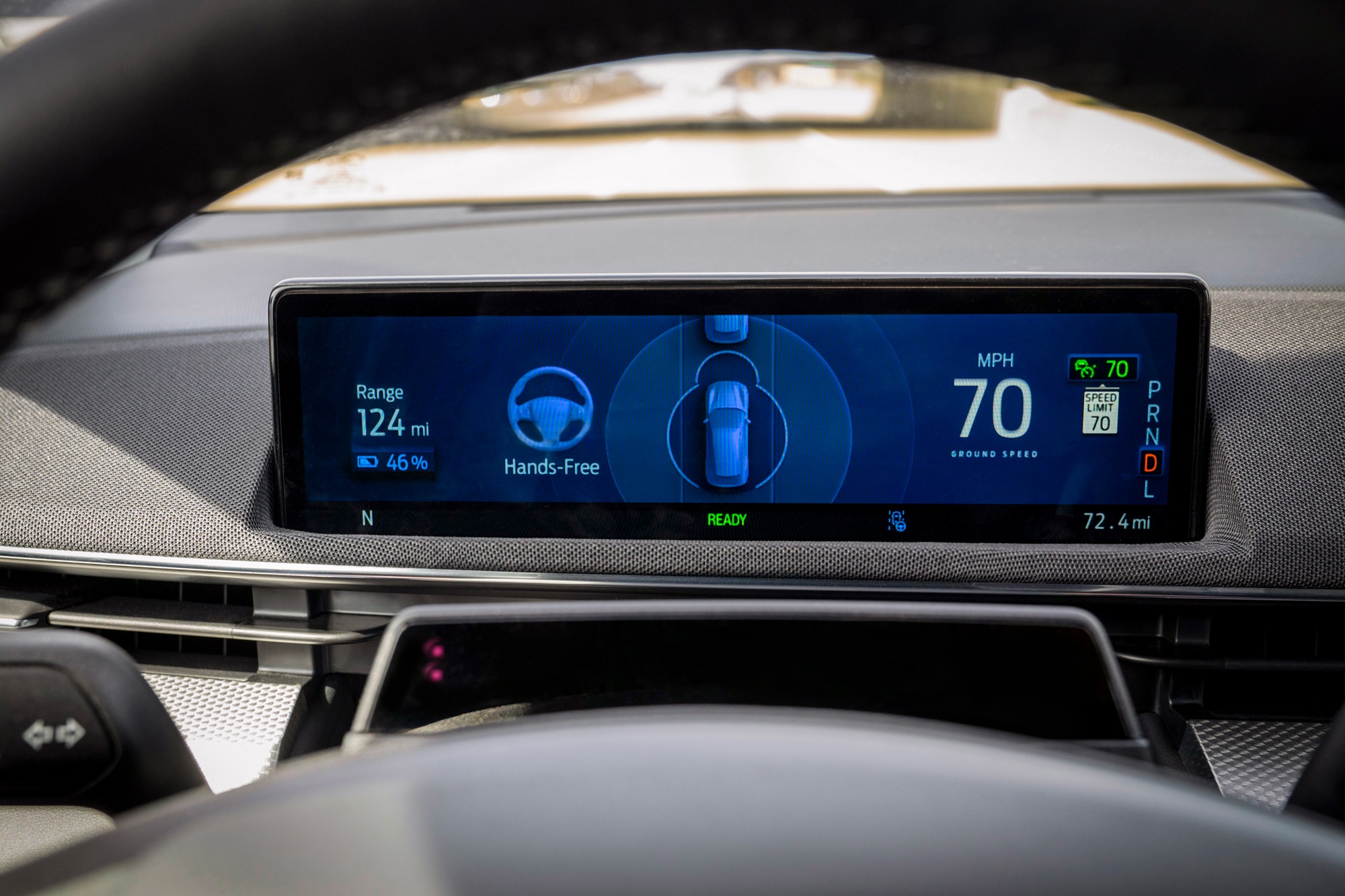What Happens if Your Electric Car Runs Out of Battery?
Choosing to ignore an electric car’s low-battery warnings can be a bigger hassle than running out of gas.
 Ford
Ford
Some drivers of gas-powered cars like to push their luck when the low-fuel warning pops up, but that’s not a good idea with an EV. In general, EVs can’t go as far on a charge as internal-combustion vehicles can on a full tank, and charging stations aren’t nearly as common as gas ones. So as soon as the low-battery warning shows up in the dash, we recommend you find a charging station toot sweet or else you may be waiting a while for a tow.
That said, a little bit of preparation and knowledge goes a long way in combating range anxiety. Understanding how much range an EV actually has and what to do after the battery warning illuminates will help you get the most out of the car, limit stress, and plan your trips accordingly.
If your electric car runs out of battery, the first thing you should know is that zero percent rarely means zero. Most manufacturers build in a safety range buffer, giving you some number of miles to find a station—which the car’s nav system may help you do—or at least pull over so you’re not blocking traffic. That buffer isn’t a standard figure, though, and some automakers are more conservative than others. According to a test by Edmunds, a 2021 Ford Mustang Mach-E managed to go only 7.3 miles after its range indicator showed 0% charge, while a 2021 Tesla Model 3 Long Range traveled 25.9 miles. The other three vehicles in the test (a 2021 Volkswagen ID.4 First Edition, a 2020 Tesla Model Y Performance, and a 2020 Tesla Model 3 Standard Range Plus) fell somewhere in between these two, but all covered at least 12 miles with a depleted battery.
When an electric vehicle nears or reaches a zero percent state of charge, it will limit performance to conserve energy. This means you’ll likely experience slower acceleration than usual and a restricted top speed. The Nissan Leaf, for example, will go into a limp mode when you challenge its limits. At this point, you won’t be able to exceed 30 mph, and a written message and turtle-shaped warning light pop up on the dash, making it clear that the battery doesn’t have much left to give.
Keep pushing and the vehicle will eventually stop sending power to the wheels. This is the worst-case scenario, as you’ve drained the battery. It’s worth pointing out that the lithium-ion batteries commonly used in EVs degrade quickly when they’re fully discharged, so it’s important to not let the vehicle sit for an extended period of time in this state.
While you may be tempted to try to physically push your dead vehicle to a nearby plug, remember that EVs are very heavy due to those large batteries. Instead, consider ringing up a roadside-assistance service. Automakers such as Ford, Nissan, and Volkswagen include a few years’ free towing to a station with new-EV purchases. Towing a dead EV to a charging station is often the easiest and best option, but some specialty roadside services will charge your vehicle on the spot, using portable fast-charging units like
Written by humans.
Edited by humans.
 Sami Haj-Assaad
Sami Haj-AssaadSami Haj-Assaad is an award-winning automotive journalist who has contributed to several automotive, electric vehicle, luxury lifestyle, and technology publications. His work isn't just limited to the written word, as he's also hosted YouTube videos and podcasts. Having grown up in the '90s, he has a strong sense of attachment to that era's style, though he also loves to geek out about the modern, futuristic tech and powertrains rolling out today.
Related articles
View more related articles